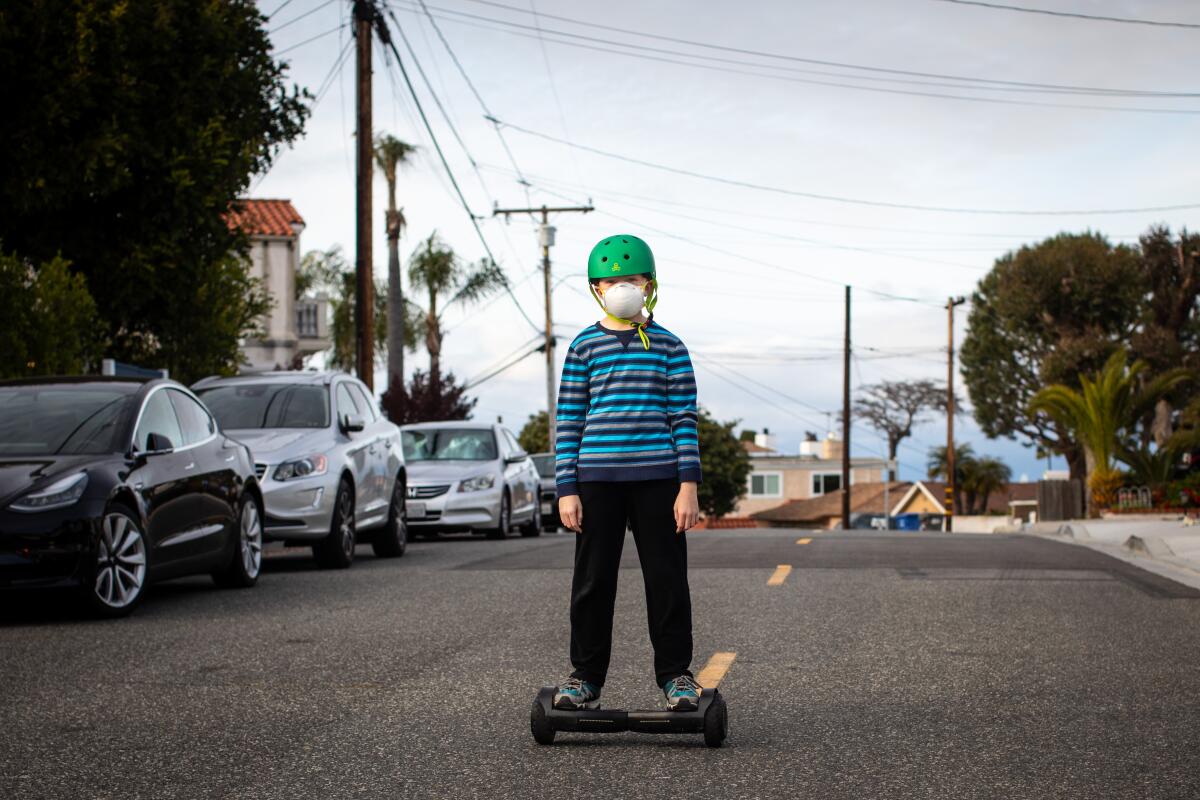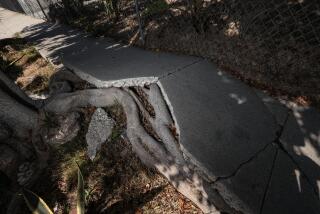Opinion: Can L.A take back its streets so kids can bike safely?

- Share via
Half a century ago, it was very common for kids to disappear into their neighborhood and play with other kids, often arriving by bike. This included the school commute. In 1969, 48% of children 5 to 14 walked or biked themselves to school. By 2009, this was down to 13%.
The result has been an enormous increase in children arriving by car. Anyone with school-age children is likely familiar with long and chaotic car dropoff lines in front of schools all over Los Angeles. The same applies to kids’ playdates, activities, sporting events, etc. — usually, children arrive and depart by car.
Students now often go to school farther from home than their parents did. But the hazards of walking and biking to school have also increased with bigger cars and a built environment that hasn’t changed to fit the behemoths on the road.
The 1973 Honda Civic was 140 inches long and 59 inches high. Today, a Honda Civic is 168 inches long and 70 inches high. A 2015 Ford Mustang is 63% larger than its 1964 predecessor. A 2018 Mini Cooper is 61% larger than its 1950 counterpart. A 2013 Land Rover is 43% larger than a 1981 model. And a modern-day pickup truck or SUV is larger than a World War II-era Sherman tank.
As cars get larger, they squeeze space in existing roads, leaving even less room for pedestrians and cyclists. Where a kid on a bike might have been able to fit comfortably between parked cars and moving cars before, they are now more likely to be perilously sandwiched between them. Even just crossing the street has become harder because of the awful blind spots for drivers of modern,massive SUVs.
Deadly collisions have become more common for children when walking. When vehicles were lower, if they struck a child, the child was more likely to have gone up over the hood. In today’s cars — and especially SUVs — due to them being so much larger, the risk of a child being pulled under and killed is greater. Between 1989 and 1998, there were 15 deaths in the U.S, of children 14 and under from “front-over” crashes; between 2009 and 2018, that rose to 575 deaths.
While larger vehicles are one factor, the built environment — the way we use our street space — hasn’t changed much to accommodate other modes of transportation. In Los Angeles, our “Vision Zero” program has failed, with 312 people killed on our streets in 2022 — a two-decade high (we’re supposed to be three years away from zero). Our city has implemented only 3% of the city’s own Mobility Plan 2035, which calls for networks of safe corridors for people walking and biking. Our city is full of larger cars driving faster than ever, which puts vulnerable road users, and especially children, at greater risk.
When vehicle sizes change and the built environment stays the same, it’s tragically understandable that our children have lost the “right to roam” and are driven most places by their parents. Given the stats on vehicle sizes and road deaths, I don’t blame parents for being hesitant to let their kids walk or bike themselves to activities in Los Angeles.
So what do we do? First, our government needs to recognize the hazard that our unnecessarily large vehicles have created in our society, and especially the toll on our children’s freedom. California should tax large trucks and SUVs accordingly, and regulate them enough to change consumer behavior. You don’t actually need a 6,000-pound Chevy Suburban to get a loaf of bread at the store. Shifting away from cars is important, and downsizing the cars that remain on the road is also key.
We should start aggressively implementing our Mobility Plan 2035. When we consider actions like adding a bike lane, we should measure changes to our streets in how many lives they can save, not how many minutes they may add to vehicle commutes.
The safety benefits of changing our streets are worth it, and the changes would free parents from having to be their child’s chauffeur. Parents will be more likely to let their kids bike and walk places if traffic has been calmed, crosswalks have been raised, intersections have been protected and bike lanes have been made safe.
We had it right in the past with smaller vehicles that drove slower, creating a city in which children had more freedom. Let’s get back to that, and support infrastructure changes needed to free our children and ourselves from having to be driven everywhere.
Michael Schneider is the founder of Streets for All.
More to Read
A cure for the common opinion
Get thought-provoking perspectives with our weekly newsletter.
You may occasionally receive promotional content from the Los Angeles Times.










